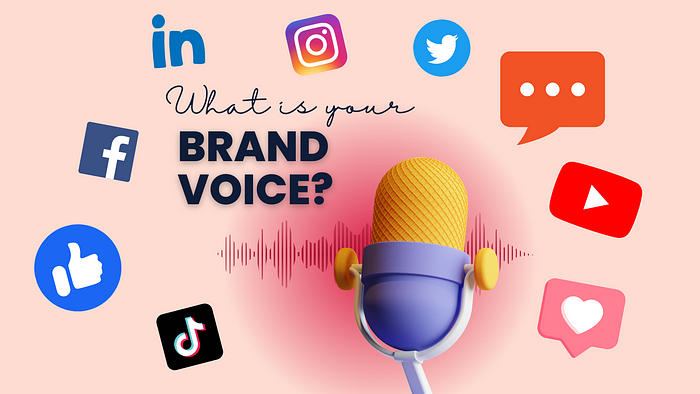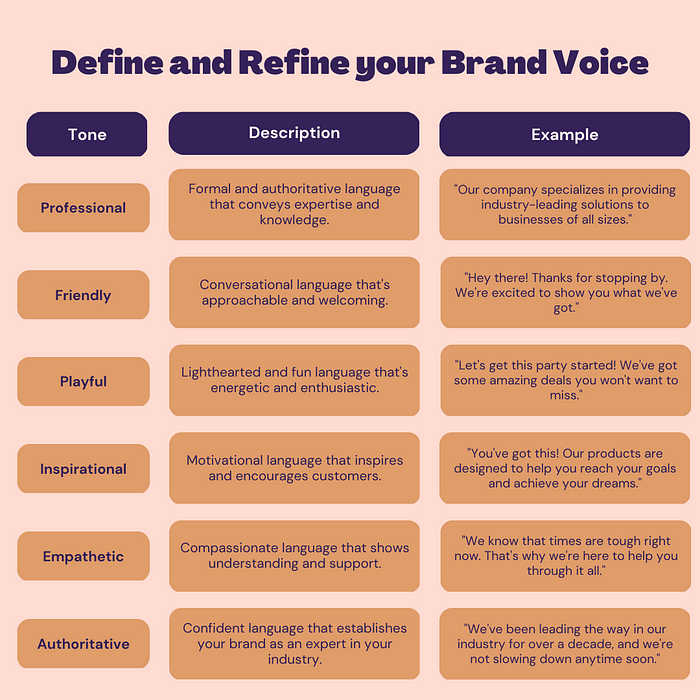
Brand voice is an important tool for establishing a connection with customers and creating a memorable brand.
It is the personality behind your business, the way your company communicates with its customers, and the way in which they perceive you and your brand. Using the right brand voice can help drive engagement, build trust, and increase customer loyalty.
Learn how to create an effective marketing strategy with brand voice. This blog explains what brand voice is and offers tips on using it to drive success. We show you how to craft a message, as well as why brand voice is so important. Get started on leveraging brand voice to create success.
What Is Brand Voice?
Your brand voice is the personality of your brand. It’s how you connect with your customers, creating an identity that sets you apart from competitors, giving them a reason to come back. Think of it as a conversation between your brand and your customers.
This voice comes through in everything you create — from the blog posts, emails, and social media posts that form the core of your message, to visual elements like colors, fonts, and design elements. Every little choice can influence how people perceive your brand.
Benefits of a Strong Brand Voice

Having a strong brand voice is an asset for businesses of all sizes. Whether you’re a small startup or an established enterprise, finding the right tone and style can make your brand stand out from competitors and build loyalty among customers.
A memorable brand voice communicates professionalism, reliability, and relevance. It encourages customers to connect with your company’s values and mission. Here are a few of the biggest benefits associated with a well-defined brand voice:
- It Builds Brand Recognition: A strong brand voice helps to differentiate your business from competitors and sets you apart in the eyes of customers. It helps to make you more recognizable, which can lead to higher customer retention rates.
- It Engages Your Audience: By utilizing a consistent tone of voice for all content published by your company, you create consistency across multiple channels and platforms. This results in an emotional connection between consumers and the brand that isn’t easily forgotten.
- It Provides Direction: When you have an established brand voice, it becomes easier for employees at every level of the organization to stay on message when crafting marketing materials or communicating with customers. This ensures that everyone is working toward the same overall goal with cohesive messaging.
Elements of Successful Brand Voices
Establishing a successful brand voice involves more than just choosing the right words. It’s the collective tone, style, and personality of all your communications. Crafting an emotional connection with customers through your brand voice helps develop loyalty.
The elements to consider when developing a successful brand voice include:
- Clarity: Your message should be clear and easy to read so that customers understand what you are trying to say. Make sure each sentence is as concise as possible while still conveying the main point in an engaging way.
- Consistency: You want customers to be able to recognize your brand no matter which medium they use — whether it’s email, social media or website copy. A consistent message helps build trust with your customer base, as they know what to expect from you every time with any interaction.
- Authenticity: Authenticity should come through in every communication you share — from simple tweets to detailed press releases. This can be achieved by using conversational language, and humor and keeping messages relevant and up-to-date in order to stay current with customer needs and interests.
- Personality: Personality gives your brand voice its unique character and helps make it stand out from the competition! Use humor, puns, and interesting anecdotes when appropriate so readers can relate more easily without feeling overwhelmed by long blocks of text or overly complex vocabulary.
Defining and Refining Your Brand’s Voice
Developing an effective brand voice is an opportunity to help your customers identify and connect with your brand on an emotional level. A strong and consistent brand voice can help build trust and loyalty — two important factors to success.

How to Leverage Your Brand’s Voice for Marketing Success
Having identified your brand’s voice, it’s time to leverage it for marketing success. A compelling brand voice can be used across all platforms — from social media to email campaigns to product descriptions.
Speak Directly to Your Audience
By communicating directly with your audience in a consistent tone and language, you create an intimate connection that helps foster loyalty and trust. Keep in mind that your target audience’s preferences and values are constantly evolving — make sure your messaging is relevant, meaningful and relatable.
Be Consistent
No matter which platform you’re using or what type of content you’re creating, strive to remain consistent throughout. This includes everything from grammar and punctuation conventions to the exact verbiage used — even if the words don’t appear directly in the message, they should still be implied by the overall feeling and cadence of the copy.
Enhance Your Offerings
A strong brand voice can help enhance the value of your offerings by bringing out key features or benefits that your audience may not have noticed before. By communicating clearly why something is different or unique, you’re able to differentiate yourself from competitors, which can ultimately lead to increased sales.
Whether you’re still trying to suss out your brand identity or are ready to create a cohesive voice and tone platform, brand voice is an essential component of marketing success. To ensure that your voice is clear, consistent, and recognizable, it’s important to invest time and resources into crafting the perfect platform. From there, your goal should be to spread and evolve the voice across channels, building a unique and powerful brand identity. By leveraging the power of brand voice, you’ll be able to differentiate your brand, foster loyalty, and captivate your audience — all of which will lead to increased engagement and sales.
